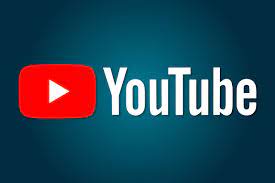Keyword Density Checker
Keyword Density Checker
Our free keyword density checking tool analyzes your page and tells you exactly how many times your keyword is occurring on any page on your website so that you can better optimize for SERPs.
How does on-page keyword density affect SEO?
On-page keyword density refers to the number of times a keyword or phrase appears on a webpage in relation to the total number of words on the page. In the past, it was common for SEO experts to focus on maximizing keyword density in an effort to improve a webpage's ranking. However, search engines have become more sophisticated and now place less emphasis on keyword density as a ranking factor.
In general, it is more important to focus on creating high-quality, relevant content that includes keywords naturally, rather than trying to artificially increase keyword density. Keyword stuffing, or the practice of cramming a webpage with keywords in an attempt to manipulate its ranking, is considered a black hat SEO tactic and can actually hurt a webpage's ranking.
To optimize keyword density for SEO, it is generally recommended to use keywords naturally and in a way that adds value to the content. This may involve using variations of the keyword, using synonyms, and including related phrases. It is also important to consider the overall theme of the webpage and to use keywords in a way that is relevant to the topic.
While keyword density is still a factor that can impact a webpage's ranking, it is important to focus on creating high-quality content that includes keywords naturally and avoid keyword stuffing.
What are the best practices for keyword density in the title and description tags, and header tags like H1, H2, etc?
When it comes to keyword density in the title and description tags, it is generally recommended to include the keyword or phrase at the beginning of the tag if possible. This can help increase the visibility of the tag and make it more relevant to search engines. However, it is important to keep the title and description tags concise and to the point, as search engines may only display a limited number of characters.
As for header tags like H1, H2, etc., it is generally recommended to use the keyword or phrase in the main header (H1) tag, as this can help signal to search engines the focus of the webpage. It is also a good idea to use the keyword or phrase in subheader tags (H2, H3, etc.) if it is relevant to the content and helps improve the overall structure and readability of the page.
Overall, it is important to use keywords in the title and description tags, and header tags in a natural and relevant way, rather than trying to artificially increase their density. This can help improve the visibility and relevance of the tags to search engines and improve the overall quality of the webpage.
What are the best SEO practices for images and videos on the pages?
There are several best practices for optimizing images and videos for search engine optimization:
-
Use descriptive, relevant file names: When uploading images or videos to your website, it is a good idea to use descriptive, relevant file names. This can help search engines understand what the media is about and improve its ranking.
-
Use alt tags: Alt tags (also known as "alt descriptions") provide a text alternative for images when they cannot be displayed, such as when a user is using a screen reader. It is a good idea to use alt tags for all images on your website, as they can provide context for search engines and improve the accessibility of your website. When writing alt tags, it is important to use descriptive, relevant text that accurately describes the content of the image.
-
Compress images: Large image files can slow down the loading speed of a webpage, which can hurt its ranking. It is a good idea to compress images to reduce their file size without sacrificing quality.
-
Use responsive design: With more and more users accessing the internet from mobile devices, it is important for images and videos to be properly displayed on a wide range of screen sizes. Using responsive design can help ensure that media is displayed correctly on all devices.
-
Use relevant keywords in file names and alt tags: Including relevant keywords in file names and alt tags can help improve the ranking of images and videos in search engines. However, it is important to use keywords in a natural way and not stuff them unnecessarily.
Optimizing images and videos for SEO involves using descriptive, relevant file names and alt tags, compressing files, using responsive design, and including relevant keywords where appropriate. By following these best practices, you can help improve the visibility and ranking of images and videos in search engines.
What are some online tools that help you evaluate on-page SEO optimization?
There are many online tools that can help you evaluate the on-page SEO optimization of your website. Some options include:
-
Google PageSpeed Insights: This tool analyzes the performance of a webpage and provides recommendations for improving its speed and user experience.
-
SEMrush On-Page SEO Checker: This tool analyzes the on-page optimization of a webpage and provides recommendations for improvement.
-
Moz On-Page Grader: This tool analyzes the on-page optimization of a webpage and provides a score along with recommendations for improvement.
-
Ahrefs On-Page SEO Checker: This tool analyzes the on-page optimization of a webpage and provides recommendations for improvement, including suggestions for relevant keywords to include.
-
SEOptimer: This tool analyzes the on-page optimization of a webpage and provides a score along with recommendations for improvement.
- Amzto.com: This site offers some really useful SEO tools that will help you improve your SEO.
By using these or similar tools, you can get a better understanding of how well your website is optimized for on-page SEO and identify areas for improvement. It is important to note that these tools are only a starting point and should be used in conjunction with other SEO strategies and best practices.
Recent Blog Posts
How to Start an SEO Campaign about Electric Cars
How to Start an SEO Campaign about Electric Cars Electric cars have become an increasingly...
How to Start an SEO Campaign for a Local Grocery Store
How to Start an SEO Campaign for a Local Grocery Store Owning a local grocery...
Mastering Google Rankings: A Comprehensive Guide to SEO Success
Unlocking Google’s Top Spot: The Comprehensive Guide to SEO Success Welcome to your journey towards...
Step-by-Step Guide: Creating & Managing an SEO Campaign for Tax Benefits
Step-by-Step Guide: Creating & Managing an SEO Campaign for Tax Benefits 1. Research and Define...
Step-by-Step Guide: Creating and Managing an SEO Campaign for Annuities and Retirement Strategies
Step-by-Step Guide: Creating and Managing an SEO Campaign for Annuities and Retirement Strategies 1. Understanding...
How to Create and Manage an SEO Campaign for Your Food and Grocery Blog
If you’re running a food and grocery blog, driving traffic to your website is essential....
Maximizing Your Real Estate SEO Campaign in a High Mortgage Rate Market
Maximizing Your Real Estate SEO Campaign in a High Mortgage Rate Market In the ever-competitive...
How to Create and Manage an Effective SEO Campaign
Are you looking to boost your website’s visibility and drive traffic by leveraging the power...
Unmasking the Spread of Disinformation: How X Amplified Confusion in the Israel-Hamas Crisis
In the digital age, information spreads faster than wildfire, and the recent Israel-Hamas conflict is...
AI-Powered Content Marketing: From Ideas to Optimization
In the digital age where content reigns supreme, marketers are on the lookout for ways...

Jeff M.
CEO / Co-Founder
Enjoy the little things in life. For one day, you may look back and realize they were the big things. Many of life's failures are people who did not realize how close they were to success when they gave up.
Popular Tools
Recent Posts

















